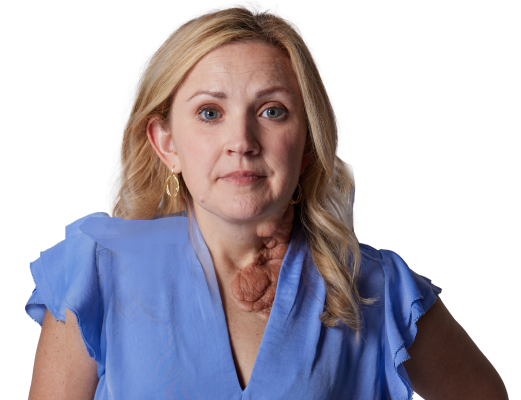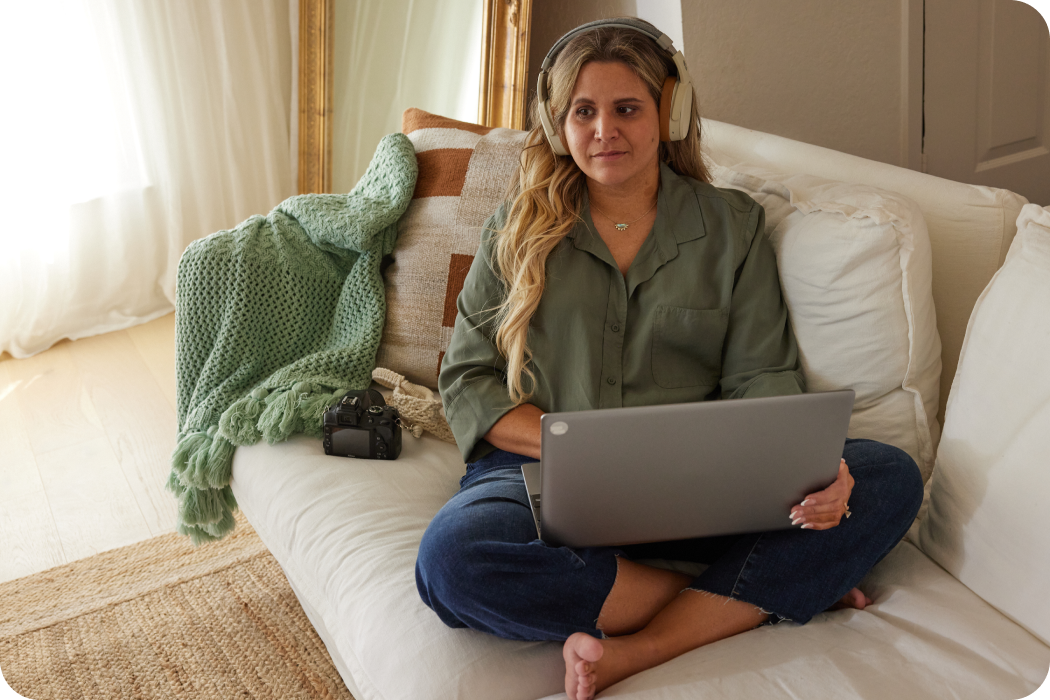This site is intended for US healthcare professionals

You can help patients stay engaged in their care

I am fortunate to have a neurologist who treats adult patients with neurofibromatosis.
– Krista, living with NF1-PN
Many specialties are involved in NF1-PN care
In a study of 130 adult NF1 cases2,*:
26 different specialties
were involved in care across all patients
Median of 2 specialists
were involved with each patient (range: 0-6)

“I remember seeing my pediatrician a couple weeks before leaving for college. He checked me out and told me to take care of myself. That was it.”
– Antwan, living with NF1-PN
Tips to help patients transition between pediatric and adult care
Discuss the transition of care early to help patients prepare8
Refer patients to healthcare providers (HCPs) who are within driving distance of where patients live4,8
If there are no local specialists where the patient primarily resides, you may want to work to establish a local HCP (eg, PCP) who can monitor them in conjunction with a specialist in another town4
Work with care coordinators, if possible9
“As I transitioned from pediatric into adult care, I was constantly having conversations with my doctors about next steps and routine tests they should be having done.”
– Krista, living with NF1-PN
Living with NF1-PN as an adult
Krista explains how she has stayed proactive in managing her care since becoming an adult.
NF has presented some challenges, especially as I’ve gotten older, where I’ve had, you know, more limited mobility with, you know, turning my head from left to right.
I’ve had more stiffness, and I just haven’t been as comfortable. It’s affected my sleep and just general mobility.
When I’m having these symptoms and I’m not comfortable, I bring it up to my doctor because medical care is ever changing and it’s always advancing.
I see quite a few doctors to manage my condition. I see a dermatologist, a neurologist, a neuro-ophthalmologist, an actual ophthalmologist, and then I’m followed up by my PCP.
When I was in college, I had this period of time where my skin on the back of my neck where I have my plexiform neurofibroma, the skin kept breaking down.
The campus doctor, he was like, “Why didn’t you come in last week?” And I said, “Honestly, I just thought it was, like, an abrasion.”
I know much better now that, like, anytime any of my neurofibromas are changing in color or texture, that it’s something I need to pay attention to.
I’d rather go to the doctor more so, and I’m doing what I can to control how I manage my care living with NF.
I feel like I don’t want this to be something that I let prevent me from having a good quality of life.
Living with NF1-PN as an adult
Krista explains how she has stayed proactive in managing her care since becoming an adult.
NF has presented some challenges, especially as I’ve gotten older, where I’ve had, you know, more limited mobility with, you know, turning my head from left to right.
I’ve had more stiffness, and I just haven’t been as comfortable. It’s affected my sleep and just general mobility.
When I’m having these symptoms and I’m not comfortable, I bring it up to my doctor because medical care is ever changing and it’s always advancing.
I see quite a few doctors to manage my condition. I see a dermatologist, a neurologist, a neuro-ophthalmologist, an actual ophthalmologist, and then I’m followed up by my PCP.
When I was in college, I had this period of time where my skin on the back of my neck where I have my plexiform neurofibroma, the skin kept breaking down.
The campus doctor, he was like, “Why didn’t you come in last week?” And I said, “Honestly, I just thought it was, like, an abrasion.”
I know much better now that, like, anytime any of my neurofibromas are changing in color or texture, that it’s something I need to pay attention to.
I’d rather go to the doctor more so, and I’m doing what I can to control how I manage my care living with NF.
I feel like I don’t want this to be something that I let prevent me from having a good quality of life.
Considerations to help patients stay engaged in their NF1-PN care
Stressing the importance of routine monitoring
- Remind patients that monitoring is a vital part of staying on top of their NF1-PN and about why having a local HCP who can monitor them in between specialty appointments is so important6,7,10
- Even if there are no acute symptoms, a PN may be growing or transforming into a malignant peripheral nerve sheath tumor (MPNST). Once a PN has transformed into an MPNST, mortality risk greatly increases (5-year overall survival is 35% to 50%)11-13
- During an annual physical exam that includes blood and lab work, patients should be assessed for signs and symptoms, including pain, mobility issues, and changes in size, volume, or texture of tumors6

Maintaining an open and ongoing dialogue with patients
- At every appointment, it is helpful to ask patients about any symptoms they may be experiencing, particularly pain, mobility issues, and visible changes in their tumors6
- Check in with patients to see if they are experiencing depression or anxiety related to their condition6
- Encourage patients to tell you about the different ways their lives have changed due to their NF1-PN
- Engage in shared decision-making with patients so they can take an active role in their health and NF1-PN management; check in about practical concerns such as financial and travel barriers
- Encourage engagement with other patients through advocacy groups14
- The use of telemedicine can alleviate travel burden and allow you to maintain regular check-ins15
Additional resources
Tools are available for your patients and your practice.
- Armstrong AE, Belzberg AJ, Crawford JR, Hirbe AC, Wang ZJ. Treatment decisions and the use of MEK inhibitors for children with neurofibromatosis type 1-related plexiform neurofibromas. BMC Cancer. 2023;23(1):553.
- Gregory TA, Molina PSB, Phillips GD, Henson JW. Impact of neurofibromatosis type 1 in an adult community population. Neurooncol Pract. 2022;9(3):229-235.
- Radtke HB, Berger A, Skelton T, Goetsch Weisman A. Neurofibromatosis type 1 (NF1): addressing the transition from pediatric to adult care. Pediatric Health Med Ther. 2023;14:19-32.
- Rietman AB, van Helden H, Both PH, et al. Worries and needs of adults and parents of adults with neurofibromatosis type 1. Am J Med Genet A. 2018;176(5):1150-1160.
- Data on file: SpringWorks Therapeutics, Inc.
- Stewart DR, Korf BR, Nathanson KL, Stevenson DA, Yohay K. Care of adults with neurofibromatosis type 1: a clinical practice resource of the American College of Medical Genetics and Genomics (ACMG). Genet Med. 2018;20(7):671-682.
- Ferner RE, Huson SM, Thomas N, et al. Guidelines for the diagnosis and management of individuals with neurofibromatosis 1. J Med Genet. 2007;44(2):81-88.
- The six core elements of health care transition 3.0. Got Transition. Accessed April 11, 2024. https://gottransition.org/6ce/?side-by-side
- Sandquist M, Davenport T, Monaco J, Lyon ME. The transition to adulthood for youth living with rare diseases. Children (Basel). 2022;9(5):710.
- Fisher MJ, Blakeley JO, Weiss BD, et al. Management of neurofibromatosis type 1-associated plexiform neurofibromas. Neuro Oncol. 2022;24(11):1827-1844.
- Higham CS, Dombi E, Rogiers A, et al. The characteristics of 76 atypical neurofibromas as precursors to neurofibromatosis 1 associated malignant peripheral nerve sheath tumors. Neuro Oncol. 2018;20(6):818-825.
- Miettinen MM, Antonescu CR, Fletcher CDM, et al. Histopathologic evaluation of atypical neurofibromatous tumors and their transformation into malignant peripheral nerve sheath tumor in patients with neurofibromatosis 1—a consensus overview. Hum Pathol. 2017;67:1-10.
- Zehou O, Fabre E, Zelek L, et al. Chemotherapy for the treatment of malignant peripheral nerve sheath tumors in neurofibromatosis 1: a 10-year institutional review. Orphanet J Rare Dis. 2013;8:127.
- Fournier H, Calcagni N, Morice-Picard F, Quintard B. Psychosocial implications of rare genetic skin diseases affecting appearance on daily life experiences, emotional state, self-perception and quality of life in adults: a systematic review. Orphanet J Rare Dis. 2023;18(1):39.
- Radtke HB, Klein-Tasman BP, Merker VL, et al. The impact of the COVID-19 pandemic on neurofibromatosis clinical care and research. Orphanet J Rare Dis. 2021;16(1):61.